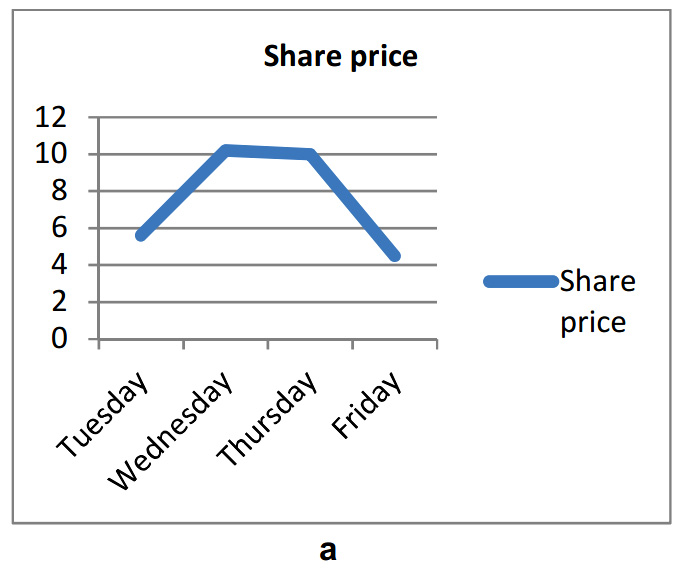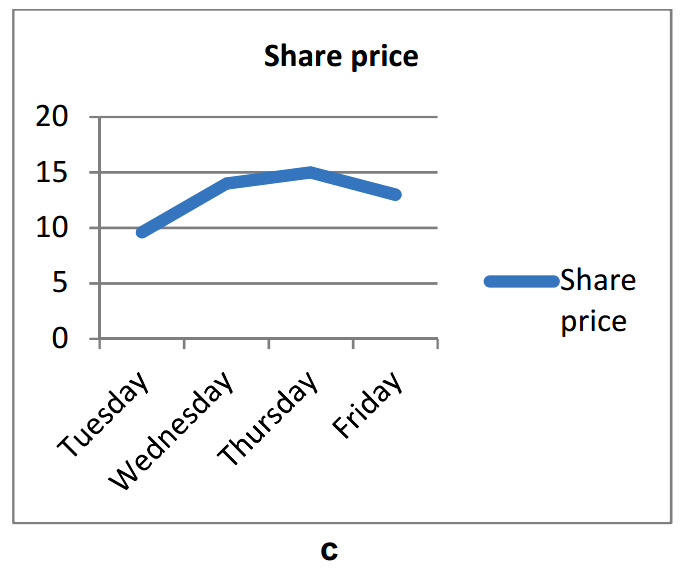Exercise 1
A. Look at the diagram below. What do you think PEST means? Listen to the first part of a lecture on business strategy and complete only the four headings in the diagram.

B. Listen again and answer the questions.
1 What do the four factors have in common?
2 How can PEST analysis be extended to include two more factors?
Answer & Audioscript
A
Political factors, Economic factors, Social factors, Technological factors
B
1 All four factors are external to the company / outside influences (and in general companies have little or no control over these factors).
2 PESTLE includes L for ‘Legal factors’ and E for ‘Environmental factors’.
Audioscript
Why is it difficult for companies to plan for the future? Because it isn’t easy to know what’s going to happen in this complex world we live in. How can a business ever know what will have an impact on its performance and success? In today’s session we’ll look at a popular tool to plan business strategy called PEST analysis. That’s P-ES-T. PEST is an acronym and the four letters stand for the different types of external factors that a business has to face and generally has no control over. By external factors I mean influences outside a company that can however impact a business.
So, what do the letters P-E-S-T stand for? Well, P stands for ‘Political’ as you might guess. E means ‘Economic’. S stands for ‘Social factors’ and finally T refers to ‘Technological factors’. I should mention there is also an extended version of PEST analysis called ‘PESTLE’ – that’s P-E-S-T-L-E, which puts ‘Legal’ and ‘Environmental’ factors into additional categories. Anyway, going back to PEST, let’s look at some examples we can put into each category so you get a clearer picture. Then later I’ll get you to apply PEST analysis to a company you know well. You don’t have to take notes as all of this information is on the intranet.
C. Listen to the second part of the lecture and complete the speaker’s examples (1-8) in the diagram. Use a maximum of three words in each gap.

D. Can you add one more example to each category?
Answer & Audioscript
C
1 stability or instability
2 employment
3 economic recession
4 exports and imports
5 consumer preferences
6 growing
7 production lines
8 smartphone
D
Students’ own ideas.
Some suggestions:
Political: wars, diplomatic crises, levels of corruption, nationalisation policies
Economic: employment levels, salaries, interest rates
Social: cultural differences, health concerns, immigration
Technological: rapid changes to technology and products / IT systems becoming outdated
Audioscript
So, examples of political factors are the stability or instability of governments in a company’s markets which will affect business growth. Another example is the employment laws in each country, which are obviously decided by politicians, and thirdly corporate taxes, also decided by government. Economic factors are often closely related. An economic recession is clearly going to affect demand for a company’s products. High inflation is going to affect costs and prices. A third example is exchange rates, which will affect exports and imports. Social factors, as the name suggests, are about people and society.
For example, changing consumer preferences and the age demographics of the population can affect demand for products. Also, is the population growing and how fast? As for technological factors, we all know the impact technology has on our lives. Businesses have to analyse the possible uses of emerging technologies, for instance automation on production lines. Another example is the impact of the internet, such as online shopping, and thirdly the smartphone revolution which allows a company to reach customers faster than ever.
E. In the third part of the lecture, the speaker will talk about what happens after a company collects data. In which order do you think the speaker will mention these tasks? Listen and check.
a Come up with a strategy to deal with risks.
b Identify any business opportunities.
c Prioritise the most relevant factors.
d Identify any significant risks to the business.
F. Listen again. What were the examples of an opportunity and a risk?
Answer & Audioscript
E
Correct order: c, b, d, a
F
Example of an opportunity: a new technology to improve production processes and reduce costs
Example of a risk: if consumer demand is falling in one part of its market, should the company develop new product lines?
Audioscript
Obviously, a PEST analysis is not only about collecting lots of data. The next step is to prioritise the most relevant factors and identify any business opportunities these o‑ er. For example, can a new technology improve production processes and reduce costs? It’s also crucial to identify any significant risks, or threats, to the business. For instance, if consumer demand is falling in one part of its market, should the company develop new product lines? Finally, managers have to go beyond analysis into action. A company mustn’t miss any opportunities for the business so these must form part of the business plan. If there are significant threats, the company must come up with a strategy to deal with these risks too. I should mention that PEST is used with other tools which also analyse internal factors, but we won’t go into that today. OK, let’s look at a PEST analysis of a well-known footwear company.
Exercise 2
A. Listen to Roel Jansen, who works as Head of Sales for a furniture company in the Netherlands. He has called a meeting with his sales team to discuss an urgent problem. Answer the questions.
1 What is the problem?
2 What could happen if the problem is not solved?
3 Which three possible solutions are suggested by team members?
Answer & Audioscript
1 The problem is a lack of language competence among existing staff to deal with enquiries from customers from new markets using their own language.
2 Failure to deal with the problem could result in losing these new customers.
3 Training internal staff, working via an external call centre, hiring new people with relevant language skills
Audioscript
R = Roel B = Bibi P = Peter A = Annette
R: OK, let’s get started. Good morning, everyone. Great to see you all here today. Now, what I want to look at today is a problem, a nice problem in a way, but a problem, the fact that we’re now getting a lot of telephone and email enquiries from new countries: Belgium and France, and Germany, of course, but also the Czech Republic, Poland and Hungary. I think the new website is helping; it’s very attractive and it’s generating traffic. But it is creating a problem.
B: Can you explain again what the problem is, exactly? New customers – that isn’t a problem, is it?
R: No, the problem is that in many of the emails that people are sending, particularly, but also some phone calls, people are not using English; and we don’t have the skills in house to deal with customer enquiries in Polish and Czech, etc.
P: OK, so the real problem is a lack of language competence here in the company, which we need to solve or we will lose potential customers. I guess that’s the point.
R: Exactly. So, I wanted to take a few minutes of your time to discuss this. Any ideas?
P: Um, would it be possible to train our people here to use the different languages? It’s a cost, but it’s a solution.
R: OK, intensive training could be a solution. I’ll note that down, thanks. What else can we do? Bibi?
B: How about using a call centre service for different languages? People who call us, they can choose the language they work with, and we contract a call centre to handle first contacts, and then they contact our sales staff.
R: That sounds like a possible solution.
A: OK, but I’m not sure how that would work. If we do that, it will just increase our costs.
R: Let’s just stick with ideas for the moment. So Annette, anything to add?
A: Maybe we recruit some people with the languages we need.
R: I think that’s a nice idea; simple and doable. I don’t know the cost, but I like the fact that we might be able to do it relatively quickly.
B. Listen to the end of the meeting and answer the questions.
1 What is the decision?
2 Who has to do what, and by when?
3 When will the problem be solved?
Answer & Audioscript
1 Recruitment of new people with the relevant language skills.
2 Annette has to create a job description by the end of the week, and advertise the post the following week.
3 The problem will hopefully be solved by the end of the month (in three weeks) with the recruitment of the new people.
Audioscript
R = Roel B = Bibi P = Peter A = Annette
R: So are there any more ideas? No? Well, I think recruitment is the best option.
B: Why do you think recruitment is the solution?
R: Well, we are looking for new salespeople anyway, at least two. And so it’s a very easy thing to just add languages to the profile required.
B: I’m not sure that it’s the best solution. I prefer training.
P: Bibi, just building on Roel’s idea, I think it’s easier to hire someone than train them in language skills. For our staff to learn Czech or Hungarian, it would take a very long time … years!
B: You may be right.
R: OK, then I think we need to look at recruitment as the quick solution. Agreed?
B: OK, I can live with this.
P: Yes.
A: Agreed.
R: Shall I take this on, or do any of you have time to do this? Annette, you normally handle people topics.
A: Do you want me to do that? I’m happy to take it on.
R: Great. So if you could get a job description done by the end of this week for us to discuss, then we can advertise next week, maybe hire by the end of the month. Problem solved in … what, three weeks?
B: If you need any help with this, just ask, Annette. It’s quite a lot of work.
A: Great, thanks.
R: Great. That’s what I love about you guys – such a great team.
Exercise 3
A. Listen to a recent business news report about the supermarket industry. Which strategies is each company pursuing?
Answer & Audioscript
White’s has introduced a loyalty scheme to provide better value, expanded its own brand range and promises ‘price matches’ with major supermarket chains like Mulberry. It’s also investing in promotions pushing into food-to-go.
Mulberry’s ‘back-to-basics’ strategy includes selling off non-core activities, spending less on special promotions in order to simplify its strategy and also cutting the number of product ranges to 20,000 to cut costs.
C&C has just announced its ambitious expansion plan including the construction of 50 new stores and it will refurbish 150 existing stores. The retailer is also doubling its product range including more fresh meat and a new own-brand low-price luxury range to rival the main supermarket chains.
Audioscript
As the supermarket wars continue we take a look at three major supermarket chains to find out about their strategies.
Upmarket food retailer White’s has introduced a loyalty scheme to provide better value to members rather than lowering its prices and entering into a price war with discounters.
It has also expanded its own-brand range and promises ‘price matches’ with the own brands of other major supermarket chains, like Mulberry’s. However, the CEO has announced that it will also continue to invest £400 million each year on weekly special offers and price promotions rather than cutting prices permanently.
She said White’s will continue to focus on an excellent in-store service, as well as high-quality product ranges. The supermarket is making a major move into food-to-go to meet the needs of busy consumers.
Food retail giant Mulberry’s is still finding it hard to adapt to both increased competition from discounters and changing consumer shopping habits.
Its ‘back-to-basics’ strategy includes selling off non-core activities, such as in-store restaurants, and it will also stop selling clothes and consumer electronics.
The chain is also spending less on special promotions in order to simplify its strategy and is cutting the number of products to 20,000 to cut costs. Mulberry’s smaller convenience stores and its online store have seen good sales growth but falling food prices continue to reduce profit margins. Latest figures show its market share remains flat, at 16 percent.
The discounter C&C has achieved spectacular sales growth in recent years. While the other main players in the retail food market have been closing supermarkets, C&C has just announced its ambitious expansion plan including the construction of fifty new stores.
The chain also said that it will refurbish 150 existing stores over the next three to four years in order to attract more customers. The retailer is also doubling its product range and including more fresh meat and a new own-brand low-price luxury range to rival the main supermarket chains.
With these major investments, it remains to be seen if C&C will also have to change its lowest price strategy.
Test
1. Listen to the speaker and choose the correct answer a, b or c.
1 a b c
2 a b c
3 a b c
4 a b c
5 a b c
Answer & Audioscript
1 a 2 b 3 b 4 c 5 a
Audioscript
1 Why don’t we employ more staff temporarily?
A If we do that, we’ll go over budget.
B Can you explain what the problem is exactly?
C Why do you think this is such a problem?
2 We need to do something about the old equipment in the factory.
A I’m not sure that would work exactly.
B Why do you think this is such a problem?
C That sounds like a good solution.
3 I think we should think about changing our strategy.
A I’m happy to take that on.
B I think that makes a lot of sense.
C How about changing our strategy?
4 Customers are complaining that our staff don’t have the product knowledge to answer their questions.
A That sounds like a good solution.
B If we do that, it will be very expensive.
C Would it be possible to give them more training?
5 We need to provide more training for our staff.
A I’m happy to take that on.
B Why do you think this is such a problem?
C How about offering them training?
2. You will hear eight short recordings twice. For questions 1–8 choose the correct option.
1 Which food product is the company going to launch?

2 What happened to the share price last week?



3 What kind of staff is the company going to recruit?

4 What percentage of sales was in India?
a 5%
b 15%
c 35%
5 What is the woman going to do?
a write a job description
b complete a job application
c design a job advertisement
6 What must the new employee do now?
a learn about company procedures
b have a meeting with her boss
c go to the HR office immediately
7 Which factor caused problems for the company?
a new regulations
b economic problems
c weather conditions
8 What does the man want to do?
a train existing UK call centre staff
b recruit more staff for UK call centre
c have a call centre in another country
Answer & Audioscript
1 c 2 a 3 b 4 c 5 c 6 a 7 b 8 c
Audioscript
1 Which food product is the company going to launch?
A: We’re planning to produce a healthy range of snacks in line with the demand for healthy food in the market today.
B: Are we going to offer sweets as well?
A: Well, they’re still selling well despite the rise in demand for healthy food. We’re going to start selling a range of vegetable crisps which have less fat, sugar and salt than any other on the market.
2 What happened to the share price last week?
Last week we completed negotiations with our main supplier and announced our takeover of their company. The share price rose sharply on Wednesday, the day of the announcement. However, on Friday the deal fell apart and the supplier pulled out. As a result, the share price dropped dramatically. We’re unsure if it’s going to rise much in the near future.
3 What kind of staff is the company going to recruit?
A: Right, staff recruitment.
B: What? More people for the call centre?
A: No, I think we can manage with the people we’ve got. I was thinking about employing two new designers.
B: Are you sure we need two? Another accountant is much more important in my view.
A: We’ll recruit one in a couple of months. Let’s get the creative side sorted first.
4 What percentage of sales was in India?
Looking at this chart you can see that more than a third of our sales were in India last year. Last year it was 30% so they’re up by 5%. However, sales fell to only 15% in Brazil, which was very disappointing. On the other hand, 5% of sales in Japan is a very positive start for us in this new market.
5 What is the woman going to do?
A: Have you got the job description so I can create the advert for the website?
B: Yes, here it is. All the details are there.
A: I think we’ll get a lot of applications for this job.
B: Great. There’re a lot of people looking for jobs like this.
A: I’ll send the final design to you to check before I post it.
6 What must the new employee do now?
A: Hi Julia, I’ve just seen the HR manager who’s asked me to explain the company procedures to you.
B: Oh, I wanted to speak to her. Is she in the office?
A: Unfortunately, she’s been called out for the day, that’s why she’s asked me to help. I know you’ve got a meeting with your boss this morning, but he says it’s okay to do this first.
7 Which factor caused problems for the company?
The local climate is a key concern for our tourism business. Happily, the poor weather didn’t affect customer numbers as much as we expected. The main issue was the recession and high inflation in target markets, which meant that fewer people booked in advance for their holidays. We expected new government regulations to impact on our business but, in fact, tax incentives have helped us.
8 What does the man want to do?
A: I don’t think we should employ new staff here to solve this problem.
B: Why not? We need people who can speak several languages. We could train existing staff here in the UK, I suppose.
A: No, it’d take far too long. So I’ve investigated setting up a call centre in South America.
B: Really? Surely that’d be really expensive. You’d still have to train staff in our methods and philosophy.
3. Listen to a part of a radio interview with Flavio Petrozzi about his export consultancy business. Choose the correct answer a, b or c.
1 The export consultancy can
a help to set up new companies.
b improve management skills.
c help new and existing exporters.
2 Mr Petrozzi’s consultants
a have a great deal of export experience.
b know a lot about being successful.
c like working in other countries.
3 Mr Petrozzi says that exporting for the first time can be
a exciting.
b scary.
c costly.
4 What is the first thing a consultant will look at?
a product research
b target markets
c costs and finances
5 Mr Petrozzi says planning
a is generally very expensive.
b succeeds if it is comprehensive.
c helps a company avoid errors.
6 What does Mr Petrozzi say about customers today?
a They want the sales offices and warehouses in their country.
b They need customer services in their own country.
c They expect to receive their orders quickly.
7 What does he say about export paperwork?
a The consultants will organise all that.
b Constant updating of systems is important.
c It costs a lot to get all the necessary documents.
Answer & Audioscript
1 c 2 a 3 b 4 b 5 c 6 c 7 a
Audioscript
I = Interviewer F = Flavio Petrozzi
Listen to part of a radio interview with Flavio Petrozzi about his export consultancy business.
I: What exactly does an export consultancy do?
F: What it says really. We provide advice and support to companies who want to start exporting or who are already exporting. We’ll work with first-time exporters to produce a comprehensive export strategy from start to finish. With existing exporters, we can help them streamline their procedures to ensure that they’re working as efficiently and effectively as possible.
I: I imagine that you and your staff have a lot of experience?
F: Absolutely. Collectively, our consultants have worked in companies which export to nearly every country in the world and they’ve also worked in many of those countries themselves. Our knowledge and experience is what makes us so successful and allows us to help other companies.
I: So, if I had a small company and was thinking of exporting, what could your consultancy do for me?
F: Well, we’d have an initial discussion to find out what your goals are and how we could help. Once you’re happy to use our services, we’d take you through all stages of exporting, from planning to complying with all legal requirements, preparing the documentation and sorting out the costs involved in the export trade. If you’ve never exported before, this can often be a rather frightening and confusing process.
I: So where would we start?
F: First we’d look at your target markets carefully and the market research required. You need to be fully aware of who your main competitors are in that market. And you need to be clear about why you think your product would sell in that particular market. And’s that’s before we’ve even looked at the costs and finances involved.
I: It’s more involved than I thought.
F: It is and many people fail because they don’t realise this and haven’t thought carefully enough about their export strategy. All the planning you do before you start is going to save you making expensive mistakes further along the line. Preparation is the key to success. Once we’ve created a comprehensive strategy, then we can look at how you’re going to manage exports on a day-to-day basis.
I: Does that mean things like the sales team and so on?
F: Exactly. It’s the daily business of selling to and servicing your customers as well as all the documentation needed in order to do this. Then you’ve got the logistics side of things: how your products are going to be delivered to the customer and so on. These days, people aren’t prepared to wait a long time for their orders, so you may need to have warehousing facilities in the destination country.
I: What about the legal requirements? That always seems to be one of the most difficult areas to deal with.
F: Our consultants will help you prepare and organise all the paperwork. Once you know what you’re doing, it’s not as scary as it first seems. We’ll set everything up for you and that also includes continuing updates of any legal changes.
I: Many companies find it difficult to justify the high costs of a consultant and might not use a company like yours. What would you say to those companies?
F: That’s fine, but if you have never exported before and want to save time and money, then our advice will save you both.
Related Posts
- Practice Listening Business English Exercises for B1 – Leadership
- Practice Listening Business English Exercises for B1 – Working abroad
- Practice Listening Business English Exercises for B1 – Entrepreneurs
- Practice Listening Business English Exercises for B1 – Logistics
- Practice Listening Business English Exercises for B1 – Job hunting
- Practice Listening Business English Exercises for B1 – Brands
